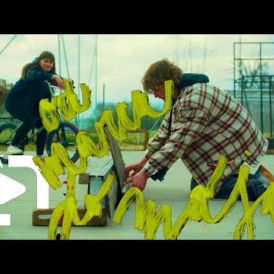“I don’t want you to call what you have a mental illness. You have been injured.”
I was several times asked by people from where i got informations used in Littlebeing webpage. How you know it is correct ? Truth is that it just poured out of my broken soul on the paper one day. I am glad that my feelings were validated ten years later while reading a book from Gabor Mate : The Myth of Normal. Following are some of the important writings from the book which are confirming what my heart knew naturally :
Child brain development before birth and during first years of life
The architecture of the brain is constructed through an ongoing process that begins before birth, continues into adulthood, and establishes either a sturdy or a fragile foundation for all the health, learning, and behavior that follow. The interaction of genes and experiences literally shapes the circuitry of the developing brain, and is critically influenced by the mutual responsiveness of adult-child relationships, particularly in the early childhood years.1 Essential neurotransmitters such as serotonin and dopamine that later play key roles in mood regulation, impulse control, attention, motivation, and the modulation of aggression—and are implicated in the very learning, behavioral, and mood difficulties the article mentions—are affected by prenatal stress on the mother. Babies of moms stressed in pregnancy have lower levels of these brain chemicals and higher levels of the stress hormone cortisol. Not surprisingly, the same study showed that these newborns also had less developed learning skills, they were less responsive to social stimulation, and they were less able to calm themselves when agitated.2 Experiences of stress in the womb can predispose to addiction, for example, by altering the brain’s ability to respond to stress in functional ways. They can also have long-term influence on the parts of the brain that modulate the incentive-motivation system impaired in all addictions, whether to drugs or behaviors. As the psychiatric practitioner, neuroscientist, author, and leading trauma researcher Dr. Bruce Perry told me, “We’ve done work, and a lot of other people have done work, showing that essentially the number and density of dopamine receptors in these [brain] areas is determined in utero.
Necessity to behave as expected as a form of child survival
Children often receive the message that certain parts of them are acceptable while others are not—a dichotomy that, if internalized, leads ineluctably to a split in one’s sense of self. The statement “Good children don’t yell,” spoken with annoyance, carries an unintended but most effective threat: “Angry children don’t get loved.” Being “nice” (read: burying one’s anger) and working to be acceptable to the parent may become a child’s way of survival. Or a child may internalize the idea that “I’m lovable only when I’m doing things well,” setting herself up for a life of perfectionism and rigid role identification, cut off from the vulnerable part of herself that needs to know there is room to fail—or even to just be unspectacularly ordinary—and still get the love she needs. Although both needs are essential, there is a pecking order: in the first phase of life, attachment unfailingly tops the bill. So when the two come into conflict in a child’s life, the outcome is well-nigh predetermined. If the choice is between “hiding my feelings, even from myself, and getting the basic care I need” and “being myself and going without,” I’m going to pick that first option every single time. Thus our real selves are leveraged bit by bit in a tragic transaction where we secure our physical or emotional survival by relinquishing who we are and how we feel.
Pressure on child school performance through punishment
“The relentlessness of modern-day parenting has a powerful motivation: economic anxiety,” the New York Times reported in 2018. For parents, giving children the best start in life has come to mean doing everything they can to ensure that their children can climb to a higher class, or at least not fall out of the one they were born into.3 The unintended impact of such fearful, status-driven child-rearing is that the child’s irreducible emotional needs fall secondary to the desperation of parents striving to ensure the academic and financial success of their offspring. Recently I was told, by a close eyewitness, of a middle-class mother yelling at her five-year-old son who balked at doing his homework: “You’re not thinking of your academic future!” the poor mom shouted at the preschooler. If only the youngster could have retorted, “Yeah? Well, you’re not thinking of my psycho-emotional future!”
Back in the world of science, the American Academy of Pediatrics, having reviewed nearly one hundred studies, issued a statement in 2018 that aligns with ancestral wisdom. It called for the end of spanking and of harsh verbal punishment of children and adolescents. Such treatment, the organization of sixty-seven thousand pediatric specialists pointed out, only increases aggression in the long term and undermines the development of self-control and responsibility. By elevating stress hormone levels, it may cause harm to healthy brain development and lead to mental health problems.4 More recently, a Harvard study showed that the damage wrought by spanking to the child’s nervous system and psyche may be as severe as that caused by more intense violence.5
Addiction as a consequence of a difficult childhood
Addictions represent, in their onset, the defenses of an organism against suffering it does not know how to endure. In other words, we are looking at a natural response to unnatural circumstances, an attempt to soothe the pain of injuries incurred in childhood and stresses sustained in adulthood.
“Warmth” is an oft-heard descriptor for the feeling of being high—it captures a felt sense that addicts know well. The actor and children’s author Jamie Lee Curtis spoke to me of “this warm bath: the way it feels when you’re cold and you step into a warm, not hot, but a warm, really warm bath where that feeling of ease rises as you lower into the warmth. It was a very familiar feeling to me, and it was one that I loved. I chased that feeling for ten years in and out of everything from stealing opiates to manipulating doctors for opiates.” “It’s like when you’re three years old, sick, shivering with fever, and your mother puts you on her lap, wraps you in a warm blanket, and gives you warm chicken soup—that’s what heroin feels like.” “I felt like I was held . . . I felt like nothing mattered, and I felt safe.” Similary “Alcohol, “gives you three or four hours of peace. Just peace. The talk in the head stops, the negative thinking. It’s precious.” Peace and quiet are not qualities most of us associate with the life of an addict, but these “precious” states are often what is sought—and, for a while, found. Whenever I started using substances again, I got a sense of what a human being is supposed to feel like.” Try saying no to that. Whatever the degree of injury, all addiction is a kind of refugee story: from intolerable feelings incurred through adversity and never processed, and into a state of temporary freedom, even if illusory. Again, try saying no to that. Addiction is an understandable attempt at self-treatment with something that almost works, thus creating a drive for further doses.
According to one survey published in 1997, looking at more than one hundred thousand students adolescents who had experienced either physical or sexual abuse were two to four times as likely to be using drugs as those who reported no such molestation.6 The ones who suffered both physical and sexual abuse were at least twice as likely to be using drugs as others who had been subjected to either abuse by itself.7
Healing
Thirty-five years into his psychiatric odyssey, Hammond met a clinician, Dr. Nabil Kotbi at New York City’s Weill Cornell Medical College, who changed his life with two short sentences: “I don’t want you to call what you have a mental illness. You have been injured.” The insight that his symptoms were not the manifestations of some mysterious medical condition, Hammond told me, “was a ‘Hallelujah Chorus’ moment . . . What [Dr. Kotbi] seemed to be saying to me was that mental illness comes from somewhere very specific. It has a story, and in that story, you’re the only one that has no power.” In the decades between his first encounter with the mental health system and his meeting this particular psychiatrist, no one had asked Hammond about traumatic childhood experiences. “I can’t describe what it was like to go into a doctor’s office, in acute pain, and have them look at me and go, ‘You shouldn’t be feeling this way.’ No one at the time was saying, ‘Hey, you’re probably a victim of child abuse.’ At that time, if you felt bad for no apparent reason, they called you bipolar. That’s all they knew. ‘He has unexplainable highs and lows,’ you know. They treated me with [the mood stabilizers] lithium and then Depakote. Neither of those were successful. Nothing was really successful until the truth about my life was acknowledged.” The truth of Hammond’s life included a cavalcade of abuse at the hands of his mother.8
What we would like to change by Littlebeing project : Caring about children through centuries
Child-rearing attitudes, approaches, and doctrines throughout Western civilization have reflected— and reinforced—their particular time and place. It is a mostly dismal trajectory that includes infanticide, terror, and abuse: all, of course, normalized in their day. Around the fourteenth century, as the psychohistorian Lloyd deMause writes, “there was no image more popular than that of the physical molding of children, who were seen as soft wax, plaster, or clay to be beaten into shape.”9 The intent was to break the child’s independent spirit, from birth onward.
Notes :
1 Jack P. Shonkoff et al., “An Integrated Scientific Framework for Child Survival and Early Childhood Development,” Pediatrics 129, no.2 (February 2012): 1–13.
2 Laurie Tarkian, “Tracking Stress and Depression Back to the Womb,” New York Times, December 4, 2004.
3 Claire Cain Miller, “The Relentlessness of Modern Parenting,” New York Times, December 25, 2018, A1.
4 Robert D. Sage and Benjamin S. Siegel, “Effective Discipline to Raise Healthy Children,” Pediatrics 142, no. 6 (December 2018).
5 Manisha Aggarwal-Schifellite, “How Spanking May Affect Brain Development in Children,” Harvard Gazette, April 12, 2021
6 P. A. Harrison, J. A. Fulkerson, and T. J. Beebe, “Multiple Substance Use Among Adolescent Physical and Sexual Abuse Victims,” Child Abuse and Neglect 21, no. 6 (June 1997): 529–3
7 Hannah Carliner et al., “Childhood Trauma and Illicit Drug Use in Adolescence: A Population Based National Comorbidity Survey Replication,” Journal of the American Academy of Child and Adolescent Psychiatry 55, no. 8 (August 2016): 701–8
8 The hit Netflix documentary Cracke up!, directed by Michelle Esrick, catalogs the real-life horror show Hammond endured as a child. Dr.Kotbi is interviewed in the film.
9 Lloyd deMause, ed., The History of Childhood: The Untold Story of Child Abuse (New York: Peter Bedrick Books, 1988), 53.
Child brain development before birth and during first years of life
The architecture of the brain is constructed through an ongoing process that begins before birth, continues into adulthood, and establishes either a sturdy or a fragile foundation for all the health, learning, and behavior that follow. The interaction of genes and experiences literally shapes the circuitry of the developing brain, and is critically influenced by the mutual responsiveness of adult-child relationships, particularly in the early childhood years.1 Essential neurotransmitters such as serotonin and dopamine that later play key roles in mood regulation, impulse control, attention, motivation, and the modulation of aggression—and are implicated in the very learning, behavioral, and mood difficulties the article mentions—are affected by prenatal stress on the mother. Babies of moms stressed in pregnancy have lower levels of these brain chemicals and higher levels of the stress hormone cortisol. Not surprisingly, the same study showed that these newborns also had less developed learning skills, they were less responsive to social stimulation, and they were less able to calm themselves when agitated.2 Experiences of stress in the womb can predispose to addiction, for example, by altering the brain’s ability to respond to stress in functional ways. They can also have long-term influence on the parts of the brain that modulate the incentive-motivation system impaired in all addictions, whether to drugs or behaviors. As the psychiatric practitioner, neuroscientist, author, and leading trauma researcher Dr. Bruce Perry told me, “We’ve done work, and a lot of other people have done work, showing that essentially the number and density of dopamine receptors in these [brain] areas is determined in utero.
Necessity to behave as expected as a form of child survival
Children often receive the message that certain parts of them are acceptable while others are not—a dichotomy that, if internalized, leads ineluctably to a split in one’s sense of self. The statement “Good children don’t yell,” spoken with annoyance, carries an unintended but most effective threat: “Angry children don’t get loved.” Being “nice” (read: burying one’s anger) and working to be acceptable to the parent may become a child’s way of survival. Or a child may internalize the idea that “I’m lovable only when I’m doing things well,” setting herself up for a life of perfectionism and rigid role identification, cut off from the vulnerable part of herself that needs to know there is room to fail—or even to just be unspectacularly ordinary—and still get the love she needs. Although both needs are essential, there is a pecking order: in the first phase of life, attachment unfailingly tops the bill. So when the two come into conflict in a child’s life, the outcome is well-nigh predetermined. If the choice is between “hiding my feelings, even from myself, and getting the basic care I need” and “being myself and going without,” I’m going to pick that first option every single time. Thus our real selves are leveraged bit by bit in a tragic transaction where we secure our physical or emotional survival by relinquishing who we are and how we feel.
Pressure on child school performance through punishment
“The relentlessness of modern-day parenting has a powerful motivation: economic anxiety,” the New York Times reported in 2018. For parents, giving children the best start in life has come to mean doing everything they can to ensure that their children can climb to a higher class, or at least not fall out of the one they were born into.3 The unintended impact of such fearful, status-driven child-rearing is that the child’s irreducible emotional needs fall secondary to the desperation of parents striving to ensure the academic and financial success of their offspring. Recently I was told, by a close eyewitness, of a middle-class mother yelling at her five-year-old son who balked at doing his homework: “You’re not thinking of your academic future!” the poor mom shouted at the preschooler. If only the youngster could have retorted, “Yeah? Well, you’re not thinking of my psycho-emotional future!”
Back in the world of science, the American Academy of Pediatrics, having reviewed nearly one hundred studies, issued a statement in 2018 that aligns with ancestral wisdom. It called for the end of spanking and of harsh verbal punishment of children and adolescents. Such treatment, the organization of sixty-seven thousand pediatric specialists pointed out, only increases aggression in the long term and undermines the development of self-control and responsibility. By elevating stress hormone levels, it may cause harm to healthy brain development and lead to mental health problems.4 More recently, a Harvard study showed that the damage wrought by spanking to the child’s nervous system and psyche may be as severe as that caused by more intense violence.5
Addiction as a consequence of a difficult childhood
Addictions represent, in their onset, the defenses of an organism against suffering it does not know how to endure. In other words, we are looking at a natural response to unnatural circumstances, an attempt to soothe the pain of injuries incurred in childhood and stresses sustained in adulthood.
“Warmth” is an oft-heard descriptor for the feeling of being high—it captures a felt sense that addicts know well. The actor and children’s author Jamie Lee Curtis spoke to me of “this warm bath: the way it feels when you’re cold and you step into a warm, not hot, but a warm, really warm bath where that feeling of ease rises as you lower into the warmth. It was a very familiar feeling to me, and it was one that I loved. I chased that feeling for ten years in and out of everything from stealing opiates to manipulating doctors for opiates.” “It’s like when you’re three years old, sick, shivering with fever, and your mother puts you on her lap, wraps you in a warm blanket, and gives you warm chicken soup—that’s what heroin feels like.” “I felt like I was held . . . I felt like nothing mattered, and I felt safe.” Similary “Alcohol, “gives you three or four hours of peace. Just peace. The talk in the head stops, the negative thinking. It’s precious.” Peace and quiet are not qualities most of us associate with the life of an addict, but these “precious” states are often what is sought—and, for a while, found. Whenever I started using substances again, I got a sense of what a human being is supposed to feel like.” Try saying no to that. Whatever the degree of injury, all addiction is a kind of refugee story: from intolerable feelings incurred through adversity and never processed, and into a state of temporary freedom, even if illusory. Again, try saying no to that. Addiction is an understandable attempt at self-treatment with something that almost works, thus creating a drive for further doses.
According to one survey published in 1997, looking at more than one hundred thousand students adolescents who had experienced either physical or sexual abuse were two to four times as likely to be using drugs as those who reported no such molestation.6 The ones who suffered both physical and sexual abuse were at least twice as likely to be using drugs as others who had been subjected to either abuse by itself.7
Healing
Thirty-five years into his psychiatric odyssey, Hammond met a clinician, Dr. Nabil Kotbi at New York City’s Weill Cornell Medical College, who changed his life with two short sentences: “I don’t want you to call what you have a mental illness. You have been injured.” The insight that his symptoms were not the manifestations of some mysterious medical condition, Hammond told me, “was a ‘Hallelujah Chorus’ moment . . . What [Dr. Kotbi] seemed to be saying to me was that mental illness comes from somewhere very specific. It has a story, and in that story, you’re the only one that has no power.” In the decades between his first encounter with the mental health system and his meeting this particular psychiatrist, no one had asked Hammond about traumatic childhood experiences. “I can’t describe what it was like to go into a doctor’s office, in acute pain, and have them look at me and go, ‘You shouldn’t be feeling this way.’ No one at the time was saying, ‘Hey, you’re probably a victim of child abuse.’ At that time, if you felt bad for no apparent reason, they called you bipolar. That’s all they knew. ‘He has unexplainable highs and lows,’ you know. They treated me with [the mood stabilizers] lithium and then Depakote. Neither of those were successful. Nothing was really successful until the truth about my life was acknowledged.” The truth of Hammond’s life included a cavalcade of abuse at the hands of his mother.8
What we would like to change by Littlebeing project : Caring about children through centuries
Child-rearing attitudes, approaches, and doctrines throughout Western civilization have reflected— and reinforced—their particular time and place. It is a mostly dismal trajectory that includes infanticide, terror, and abuse: all, of course, normalized in their day. Around the fourteenth century, as the psychohistorian Lloyd deMause writes, “there was no image more popular than that of the physical molding of children, who were seen as soft wax, plaster, or clay to be beaten into shape.”9 The intent was to break the child’s independent spirit, from birth onward.
Notes :
1 Jack P. Shonkoff et al., “An Integrated Scientific Framework for Child Survival and Early Childhood Development,” Pediatrics 129, no.2 (February 2012): 1–13.
2 Laurie Tarkian, “Tracking Stress and Depression Back to the Womb,” New York Times, December 4, 2004.
3 Claire Cain Miller, “The Relentlessness of Modern Parenting,” New York Times, December 25, 2018, A1.
4 Robert D. Sage and Benjamin S. Siegel, “Effective Discipline to Raise Healthy Children,” Pediatrics 142, no. 6 (December 2018).
5 Manisha Aggarwal-Schifellite, “How Spanking May Affect Brain Development in Children,” Harvard Gazette, April 12, 2021
6 P. A. Harrison, J. A. Fulkerson, and T. J. Beebe, “Multiple Substance Use Among Adolescent Physical and Sexual Abuse Victims,” Child Abuse and Neglect 21, no. 6 (June 1997): 529–3
7 Hannah Carliner et al., “Childhood Trauma and Illicit Drug Use in Adolescence: A Population Based National Comorbidity Survey Replication,” Journal of the American Academy of Child and Adolescent Psychiatry 55, no. 8 (August 2016): 701–8
8 The hit Netflix documentary Cracke up!, directed by Michelle Esrick, catalogs the real-life horror show Hammond endured as a child. Dr.Kotbi is interviewed in the film.
9 Lloyd deMause, ed., The History of Childhood: The Untold Story of Child Abuse (New York: Peter Bedrick Books, 1988), 53.



